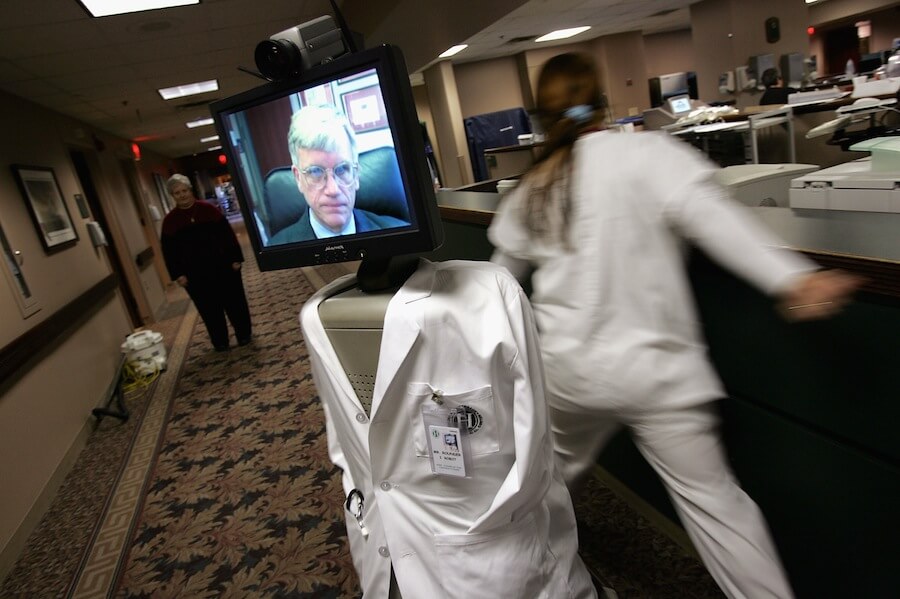Technology has brought us driverless cars, love-bots, robo-cops and now, robo-docs.
Currently, thousands of robots are already engaged in medical activities, mostly related to diagnosis, health monitoring, surgery and even with the recovery of patients.
While it’s expected that the robotic sector will see significant growth over the next five years, there are still concerns about the accuracy of the machines when operating without the assistance ofhuman specialists. The presence of robots in medicine has already been a reality for several years. The global medical robotic systems market was valued at $7.47million in 2014 and the sales of medical robots reached 1,224 units worldwide in the same year. RELATED:New report sheds light on city immigrants’ health concerns The most important applications are robot-assisted surgery and therapy with 978 units sold in 2014. Indeed, the total value of sales of medical robots was reported to be$1.3million, according to the International Federation of Robotics. Medical robotsare the most valuable service robots with an average unit price of about one million dollars, including accessories and services. Although sales of medical robots decreased by 5 percent in 2014 compared to 2013, the outlook for this market looks encouraging for the next five years. The sector is expected to reach$11.4 billion by 2020, according to the report “Medical Robots Market,” published by the agency MarketsandMarkets. Further findings from Grand View Research claim that the key factors driving the demand for the medical robots market include rapidly growing demand for precise,efficient andminimallyinvasive surgery. The growth in the volume of this kind of surgery, as a consequence of growing disease prevalence levels, is also likely to drive the market expansion. For specialists, the presence of robots in such a sensitive area as medicine is beneficial and even necessary because they have been shown to contribute to more precise surgery and also reduce patient recovery time. “More accurate operations, increased patient comfortand shorter recovery times have been demonstrated with robots,” Achim Schweikard, professor at Luebeck University in Germany and author of the book “Medical Robotics”, said. RELATED:GE promises jobs, innovation, prestige will come with Boston move Presently,there are roughly four types of medical robots. Robots for navigation, where the surgical instrument is moved by a robot arm;robots for motion replication, wherethe robot replicates the surgeon’s hand motion via a passive robotic interface; robots for imaging, wherean imaging device is mounted to a robotic arm to obtain 2D or 3D imagesand robots for rehabilitation; wheremechatronicdevices can support the recovery process of stroke patients. There are also projects that seek to create robot wheelchairs and prostheses that can be controlled by the human brain. Technological advancement has also led to the arrival of Dronlife, a fleet of drones thatcan transport human organs more efficiently than conventional methods. Although robots have come to revolutionize some medical practices, experts point out that we must be careful with the presence of machines in medical settings. Given the advances in this technology, Simon van Rysewyk, author of “Machine Medical Ethics”from the University of Tasmania, questions if medical machines should be programmed to follow a code of medical ethicsand whether such machines share responsibility with humans for the ethical consequences of medical actions. Schweikard warns that “any new method has risks. In medicine, and surgery especially, the barriers for introducing new technologies are very high.”
While the debate about the benefits and risks of the presence of robots in medicine is ongoing, the creators of these machines foresee a promising future for this technology.
“Technology is advancing very fast, so after every advancement new applications can be taken in to the medical field. The technology will improve both the detection and treatment of diseases, such as tissue regeneration, or even the creation of artificial organs for transplantation,” said Tyes Ferrer, creator of Dronlife. – By Daniel Casillas
Medical robotics: The future of treatment

Getty Images






















